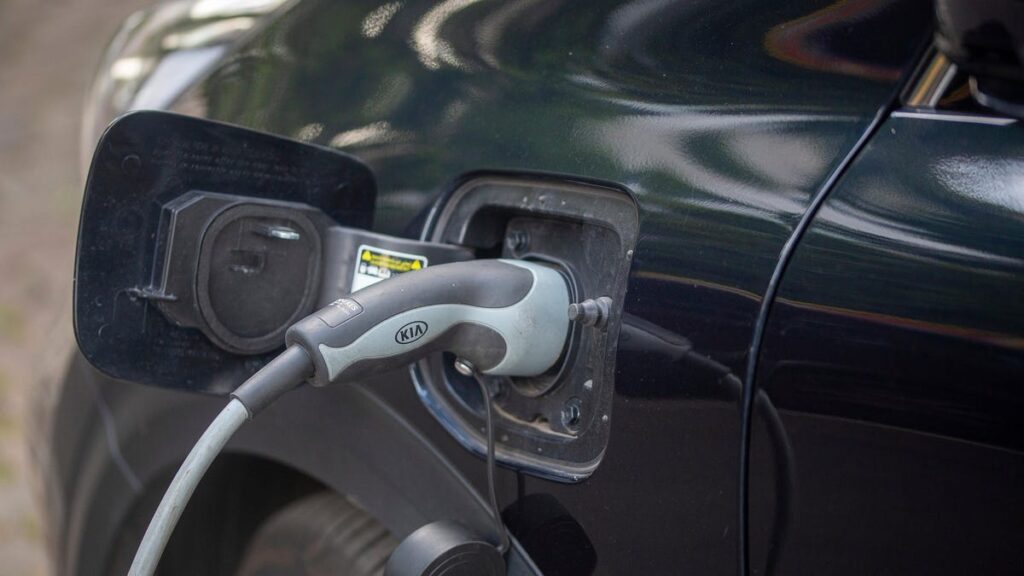Read This: EV Charging Should Be So Much Easier

Image: Fernando Gutierrez-Juarez (AP)
EV charging is a hassle. I’m not talking about simply finding a charger to use: I’m talking about all the extra tech that comes along with simply plugging an EV in to get some juice. But as our colleague Kevin Williams pointed out for Heatmap, we’d all be better off with just a simple wall outlet.
Electric Car Charging Still Sucks, But That Might Change
Kevin was recently on a 750-mile drive in a Lucid Air going from Columbus, Ohio to Fontana Dam, North Carolina. When he arrived at the dam he needed to charge. But given the remote location of the site there were no DC fast chargers and he forgot to bring the adapater that would’ve allowed him to use a Tesla NACS Level 2 charger. Luckily there was a charging cable in the truck for a NEMA 14-50 outlet. The beauty of the whole thing was how simple and hassle free it was to use, as Kevin described:
I had never used one before, but it was stupendously simple at a nearby campground. I didn’t need a cellphone to open an app to connect to the charger and start my session. I just plugged in the car like I would my iPhone.
Charging wasn’t blisteringly fast — but it wasn’t slow either. Since the car and the cord are both self-limited to avoid overheating the power source, it maxed out at 9.6kW per hour. That’s not the 19.2 kW speeds the car is capable of, but it’s still very good, and stronger than the 6.6 kW found at many level 2 public chargers. Even considering the Lucid Air’s large 118 kWh battery, the rate I was charging would have been enough to go from about 15% to more than 80% overnight.
Kevin says that charging could be made much more simple if we throw out all the tech and just use a simple wall outlet that’s common to campgrounds; they’re already the source of power for many home wall chargers anyway.
The NEMA 14-50 outlet also underpins much of our charging technology already, particularly at home. In fact, most home EV chargers are just a spare NEMA 14-50 outlet on a dedicated circuit. You might get a few fancy features, like Wi-Fi or energy monitoring, with the wall-mounted box, but the electricity is probably delivered from a NEMA 14-50. Indeed you can find many threads on Reddit outlining how much you can save by forgoing the box altogether and just going right to the source.
That should be all you need at the end of the day. Like Kevin points out, with the reliability of EV chargers around the country spotty enough. EV charging companies worry about uptime. A simple outlet is easier and faster to repair than a charging terminal. “A power outlet can be serviced by any common electrician, whereas EV charging stations can be complicated and difficult to repair,” Kevin says. Head over to Heatmap and read more about the simplicity of his charging experience. It’s an eye opener for EV ownership.



